
Advancing Healthcare Experience and Outcomes
Seattle Children’s is committed to improving healthcare experiences and outcomes for all patients and families. Tracking progress over time offers insight into where we are seeing success and where opportunities for improvement remain.
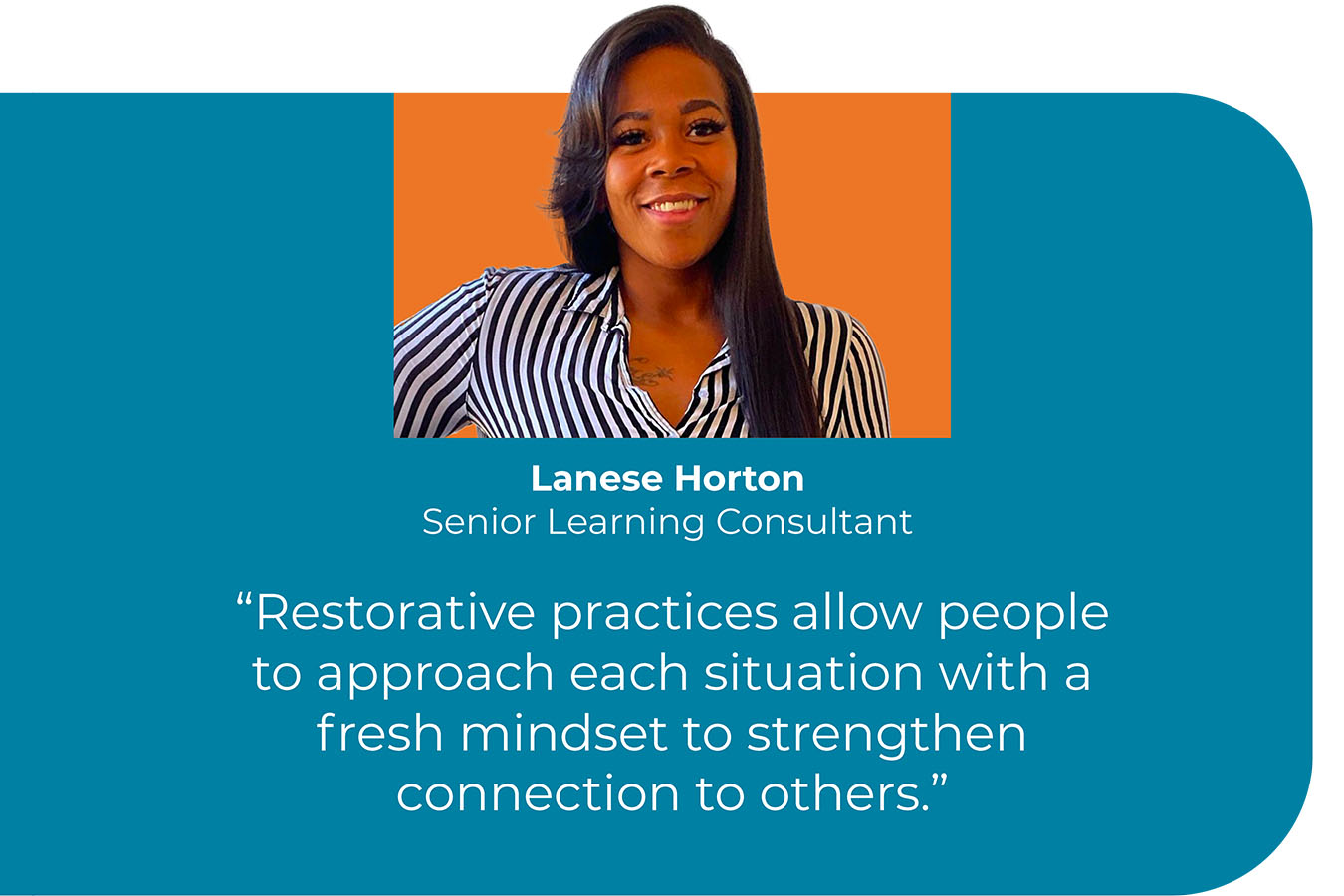
Healing From Within: Restorative Practices for Relationship Building
“Restorative practices are a way of life,” says Lanese Horton, senior learning consultant at Seattle Children’s and restorative practices lead facilitator.
Restorative practices — when applied to people management and building a welcoming organizational culture at Seattle Children’s — prioritize relationships and provide tools to equip leaders and workforce members to identify challenges, take accountability and resolve conflicts.
Read the full story to learn more.
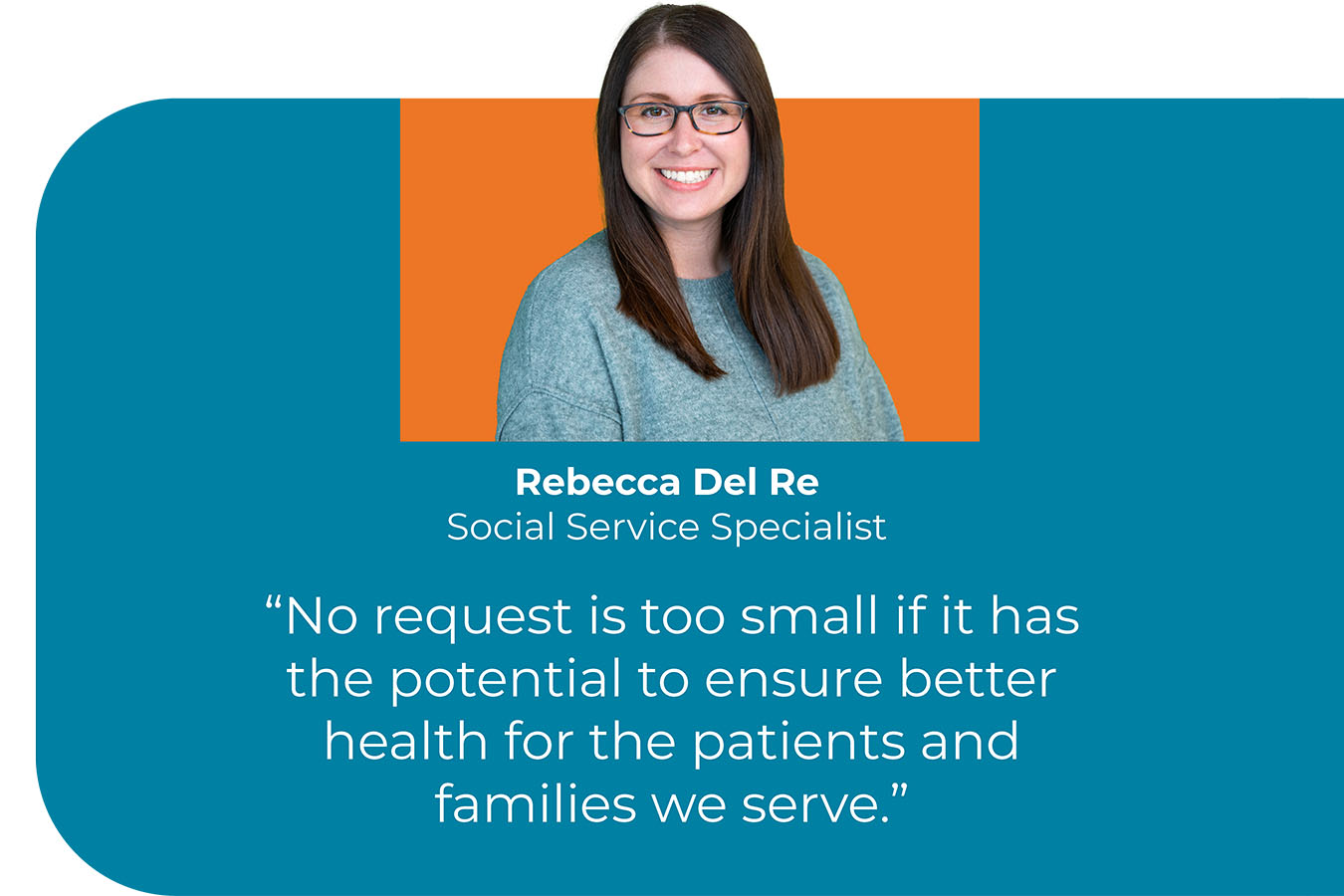
Helping Families Get the Essentials They Need to Thrive
“When you don’t have an adequate place to live or food to feed your family, it’s really hard to get basic care or benefit from the care you do receive,” says Rebecca Del Re, a social service specialist and member of Seattle Children’s Social Work Department.
A multidisciplinary team at Seattle Children’s is connecting patient families with resources to meet their essential needs.
Read about a patient who was supported by this effort in the full story.
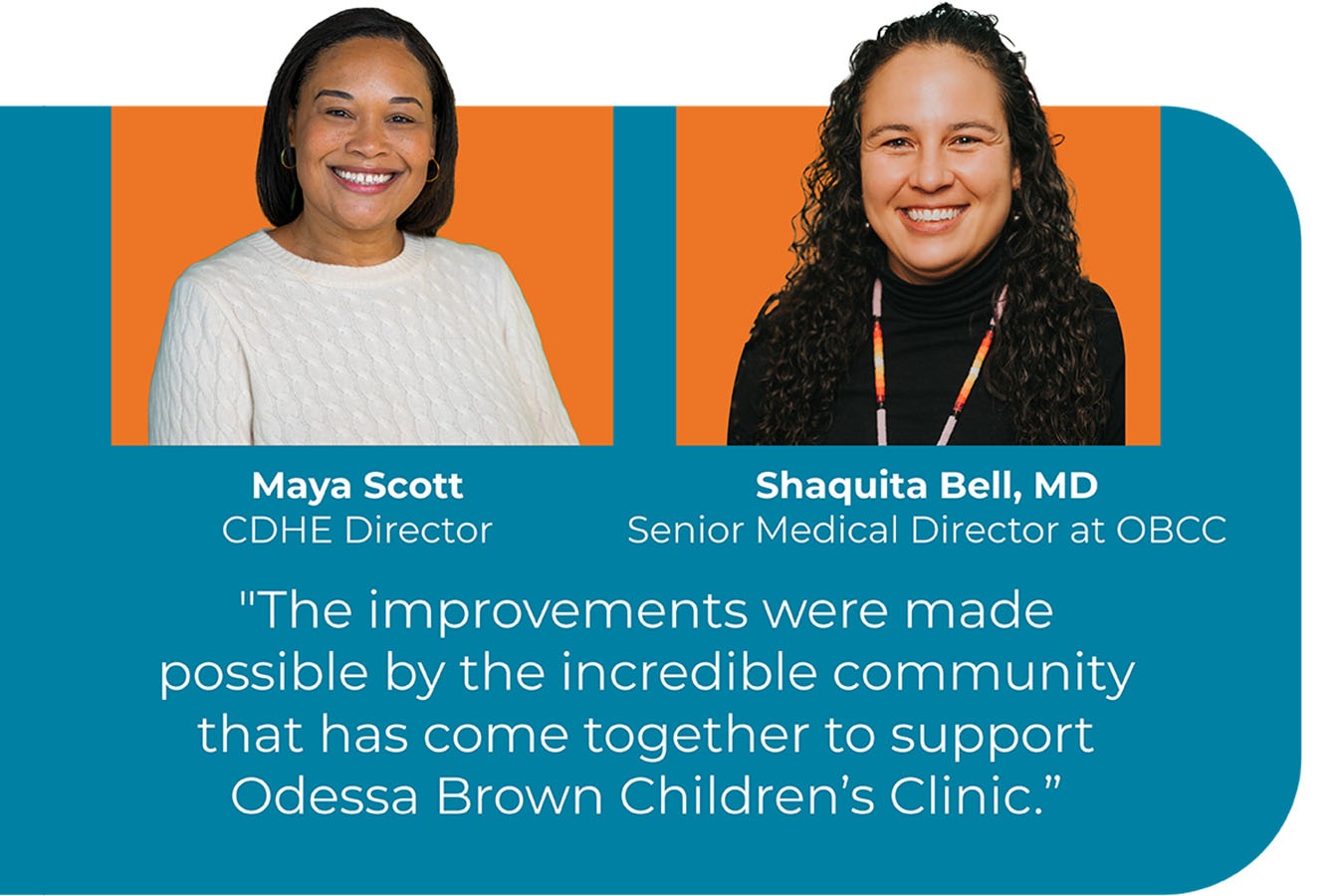
Advancing Care for Patients With Sickle Cell Disease
People with sickle cell disease may not always receive the quality care they deserve. The Odessa Brown Children's Clinic (OBCC) at Seattle Children's alongside the Center for Health Outcomes (CHO) has launched several initiatives to improve sickle cell disease care.
According to CHO Director Maya Scott, Seattle Children’s community is integral to identifying and driving important improvements. "Thousands of people have allowed Seattle Children's to learn from them, and it is our responsibility to make sure the community's dedication is something we recognize, celebrate and honor."
Read how Seattle Children’s is improving care for people with sickle cell disease in the full story.
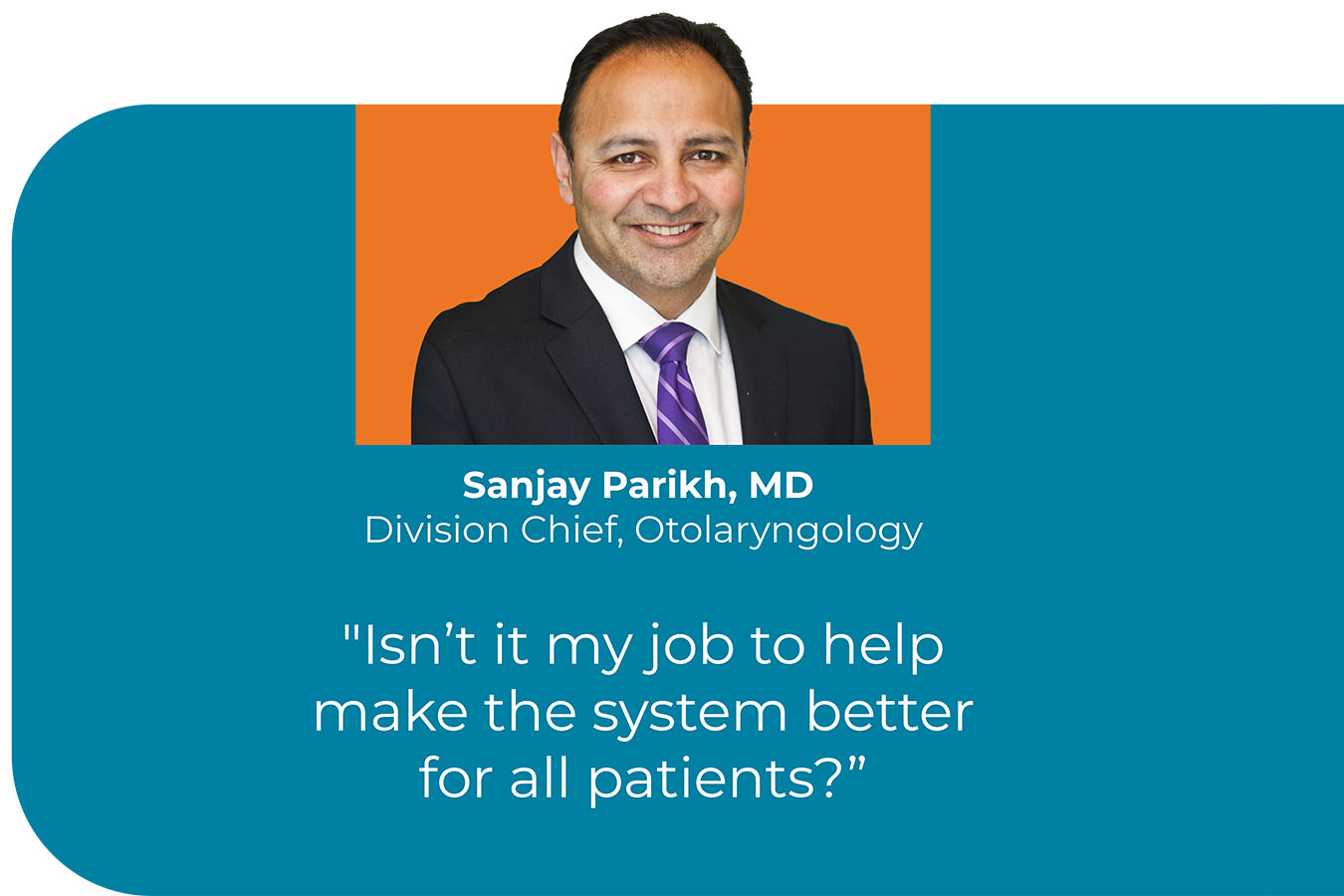
“It’s Me and the System:” Using Technology to Close Gaps in Care
“When I reviewed the data of the patients I was treating, I saw the health disparities clearly,” said Sanjay Parikh, MD, division chief, Otolaryngology – Head and Neck Surgery at Seattle Children’s.
“I realized: It’s me, and it’s also the system. And isn’t it my job to help make the system work better for all patients?” Parikh and his team at Seattle Children’s closed a critical care gap for patient families who do not use English for care.
Read the full story to find out how.
Outcome Measures
The progress of Seattle Children’s Health Equity and Anti-Racism Action Plan is tracked through annual outcome measures.

Adaptive Social Response
Reduce the use of the most restrictive interventions from 27.1% to less than or equal to 26.2% by increasing the use of Adaptive Social Response.
Goal: 26.2%
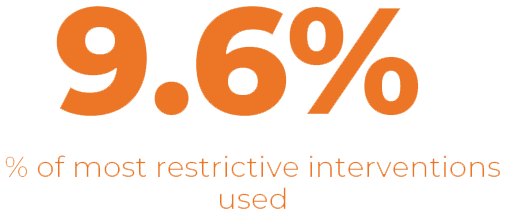
The continued emphasis on and expansion of multidisciplinary Adaptive Social Response rounding and collaboration with charge nurses during daily huddles continue to sustain improvements.
Workforce Metric
Reduce first-year turnover rate by 10%, from 25.9% to 23%, to ensure quality health outcomes.
Goal: 23%
 New onboarding resources for leaders and teams were introduced and internal mobility continues to grow.
New onboarding resources for leaders and teams were introduced and internal mobility continues to grow.
Family Experience Survey
The Family Experience Survey (FES) from Press Ganey achieves an overall average score of 83%.
Goal: 83%
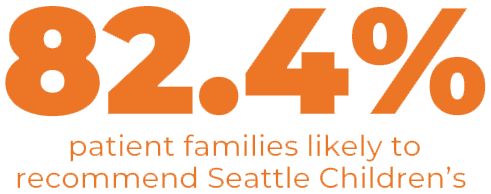 Seattle Children's FES score trended upward in the first half of the year. Scores vary widely by care area.
Seattle Children's FES score trended upward in the first half of the year. Scores vary widely by care area.
Social Determinants of Health (SDOH)
Achieve 80% SDOH questionnaire completion by seen patients.
Goal: 80%
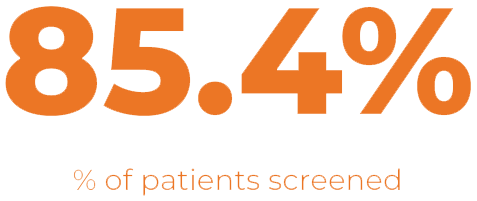 SDOH screening continues to be added to registration processes for clinics across the system. There is an additional focus to increase the number of community-based organizations in the community services referral network by 5%.
SDOH screening continues to be added to registration processes for clinics across the system. There is an additional focus to increase the number of community-based organizations in the community services referral network by 5%.
Strategic Plan
Complete all strategic plan projects that directly support a goal that advances patient healthcare experiences and outcomes.
Goal: Projects completed by FY25 end
 The projects identified have impacts on patient care, workforce and engagement, providing visibility into and accountability for healthcare experience and outcome goals.
The projects identified have impacts on patient care, workforce and engagement, providing visibility into and accountability for healthcare experience and outcome goals.
Seattle Children's fiscal year is Oct. 1 through Sept. 30. Data as of March 31 2025.
Data Snapshot
Seattle Children’s aims to better serve the patients and families they serve — no matter their language, insurance or payment type or socio-economic conditions. See progress in the data below.
Top five languages spoken by patients/families
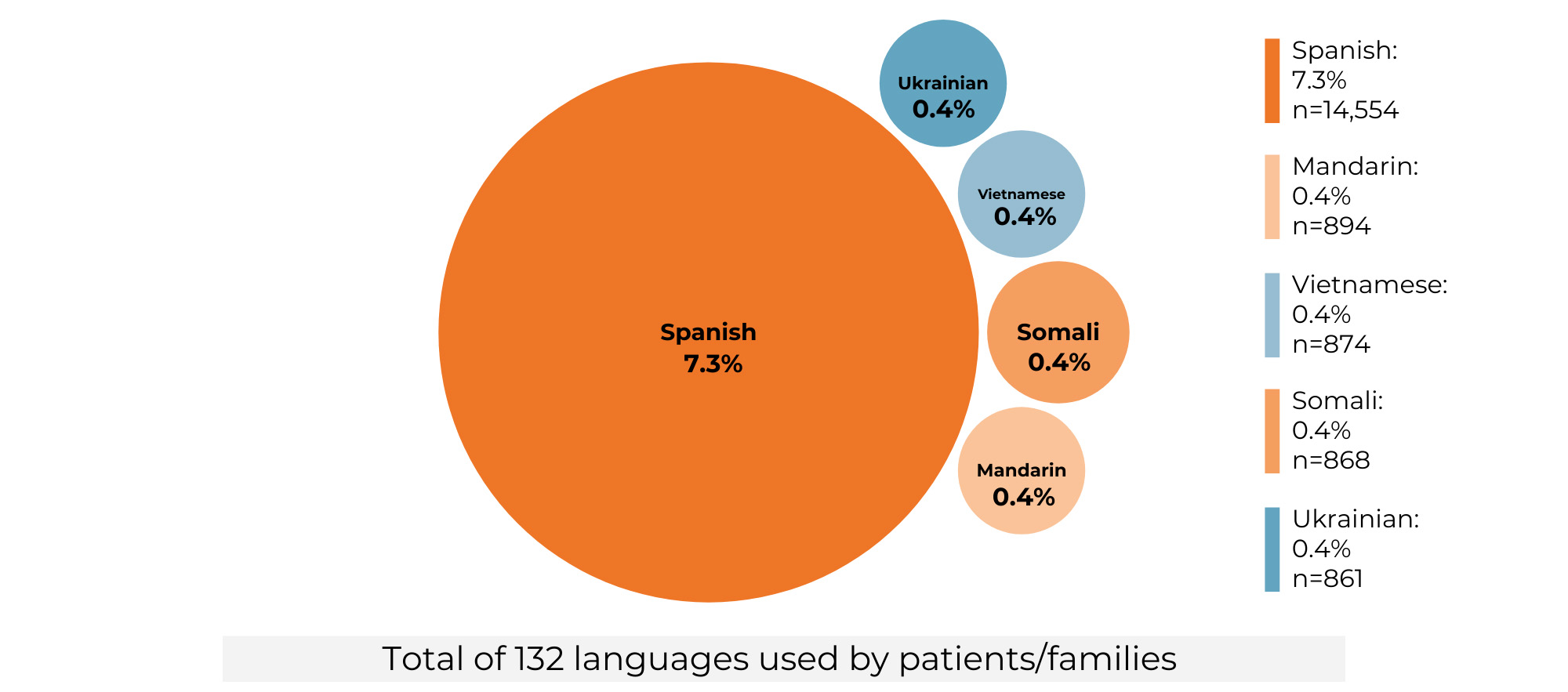
Languages used represents ‘Language for Care’ and the families’ need.
Payer type

Payer type reflects individual encounters, not distinct patients.
Social Determinants of Health (SDOH) screening In FY24
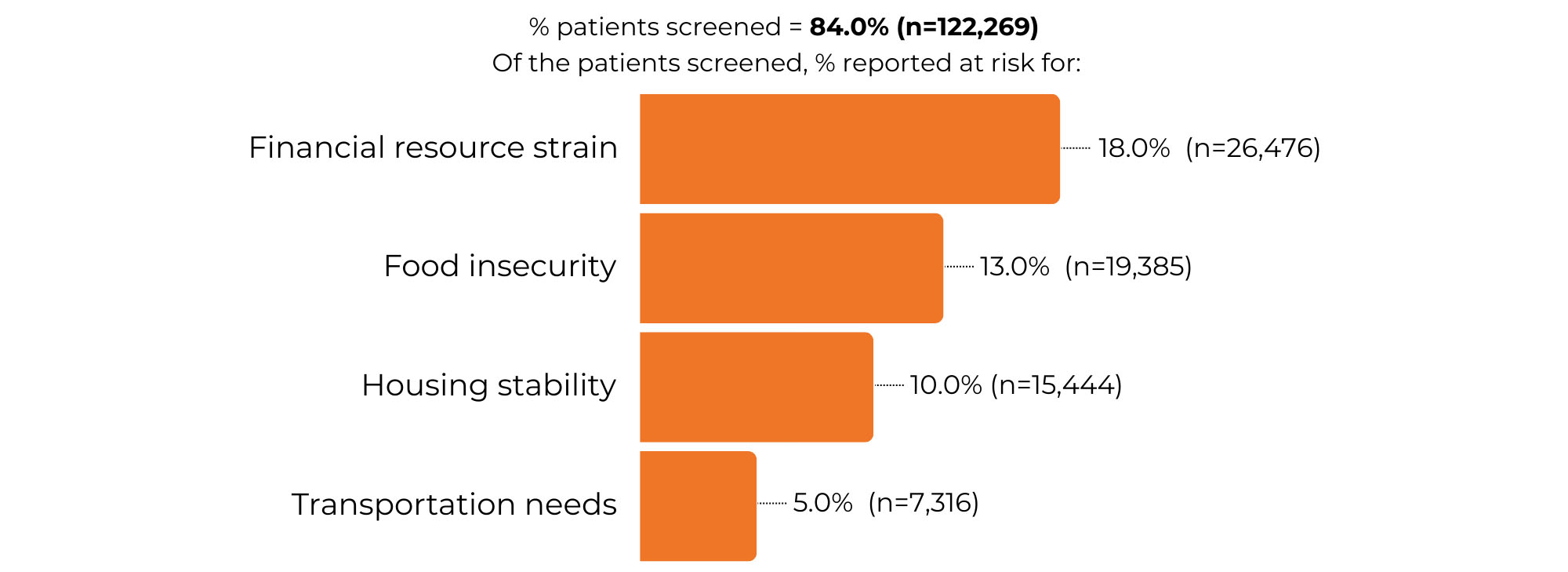
Eighty-four percent of eligible patients had an SDOH questionnaire screening. An SDOH screening is defined as a risk score being assigned, an opt-out response being recorded, or any partial data/response for a specific area called a domain. The denominator is defined as patients with a visit in FY24 in a department that offers the SDOH questionnaire, who were eligible for an SDOH questionnaire screening. The numerator is patients with a visit in FY24 who had an SDOH screening.
The risk percentage represents medium or high risk in a domain. Patients with a low-risk score are not considered at risk and are not included in the numerator for that domain.
Looking Forward
Seattle Children's advancement of positive healthcare experiences and outcomes for all patients is woven throughout its strategic plan, quality and safety efforts, and workforce culture. The organization continues developing system-wide capabilities that identify and address gaps in access while improving outcomes for patients, families, and the workforce.
Seattle Children's celebrates the individuals and teams leading these efforts and welcomes partners at every level. From providing language-concordant care to connecting medical residents with diverse families, these efforts remove barriers, build trust, and strengthen care relationships. Significant progress has improved retention, expanded recruitment of underrepresented research participants, and strengthened executive accountability.
This work is ongoing. Seattle Children's holds its team accountable for deepening action that moves toward a future where every child has exceptional care while honoring those already leading the way.
